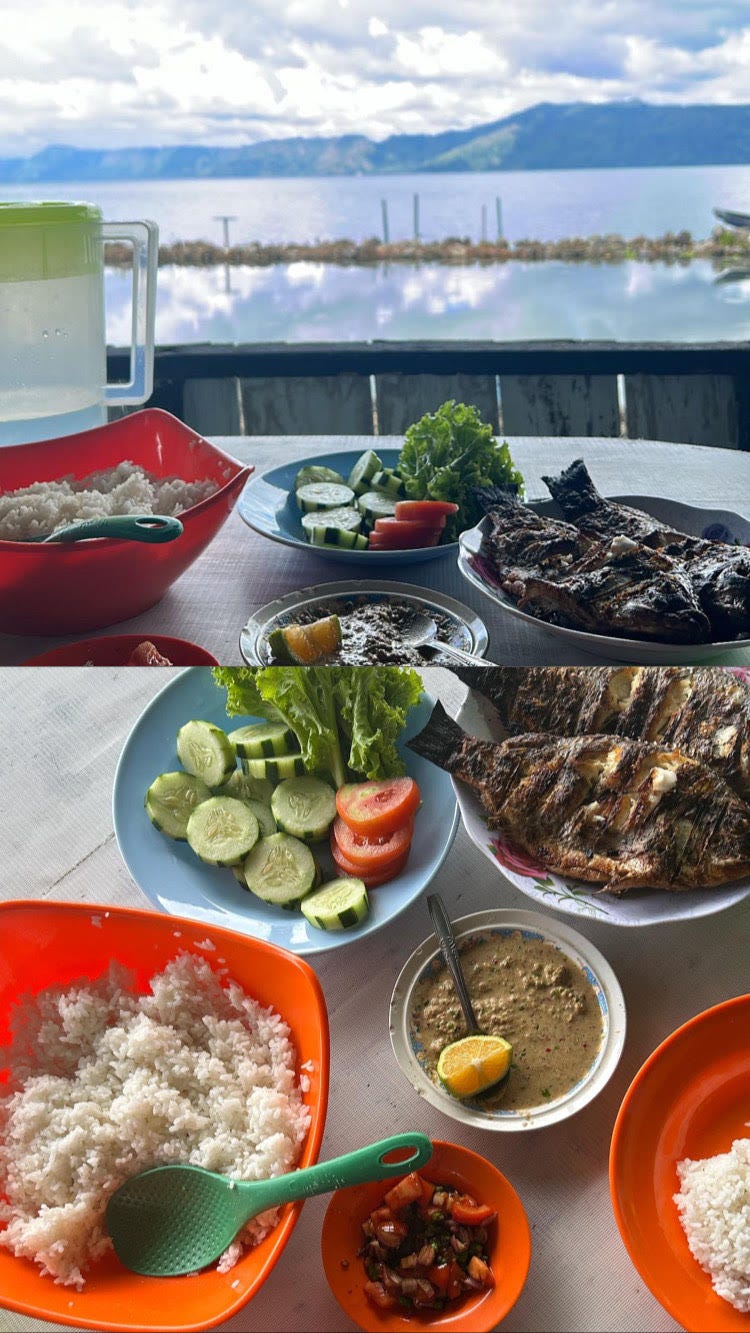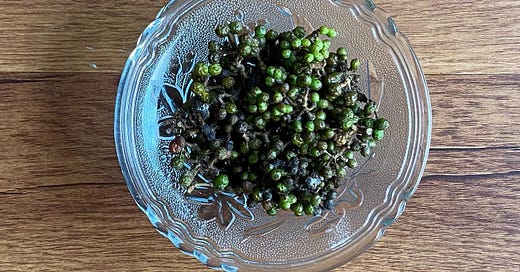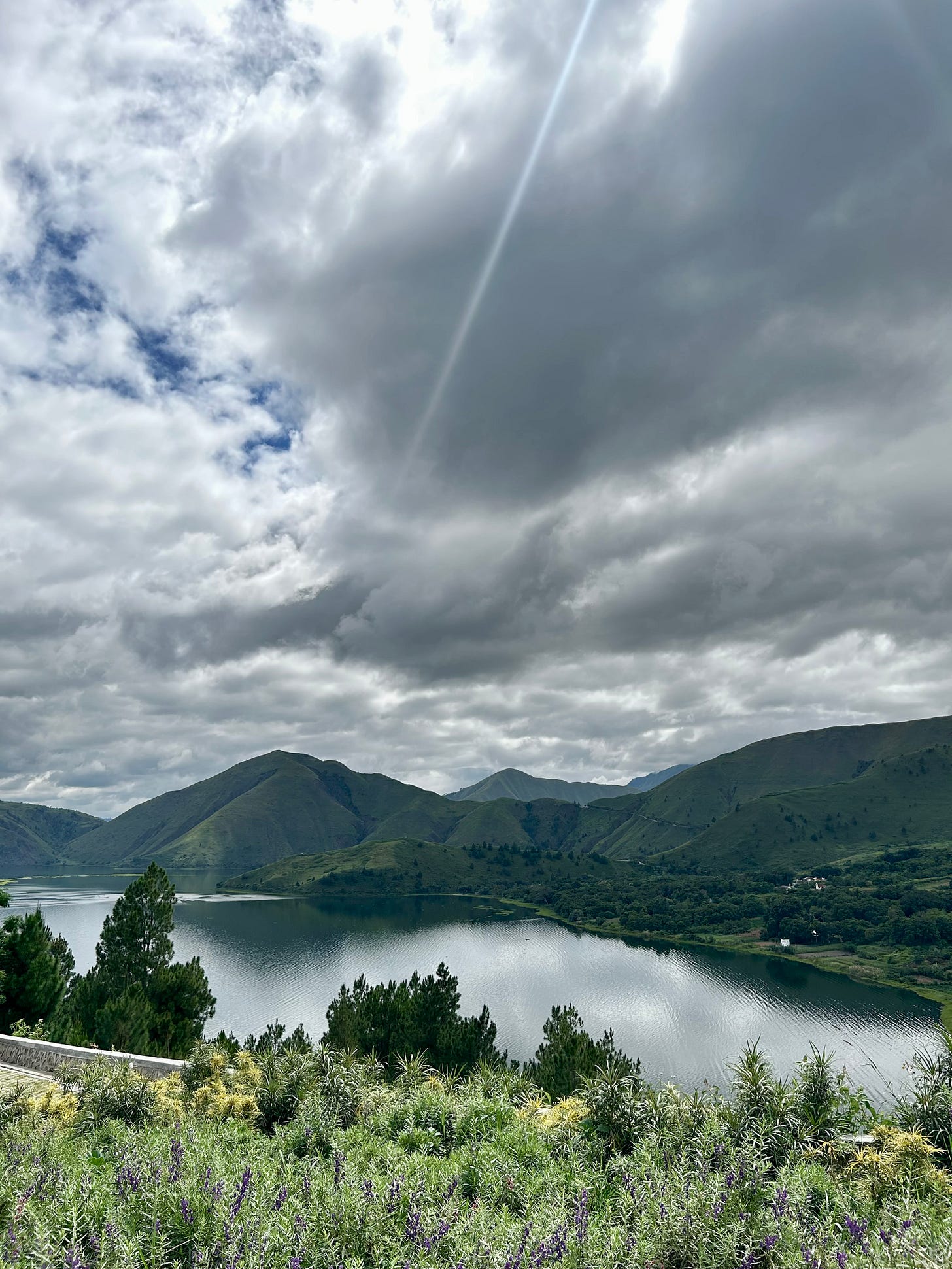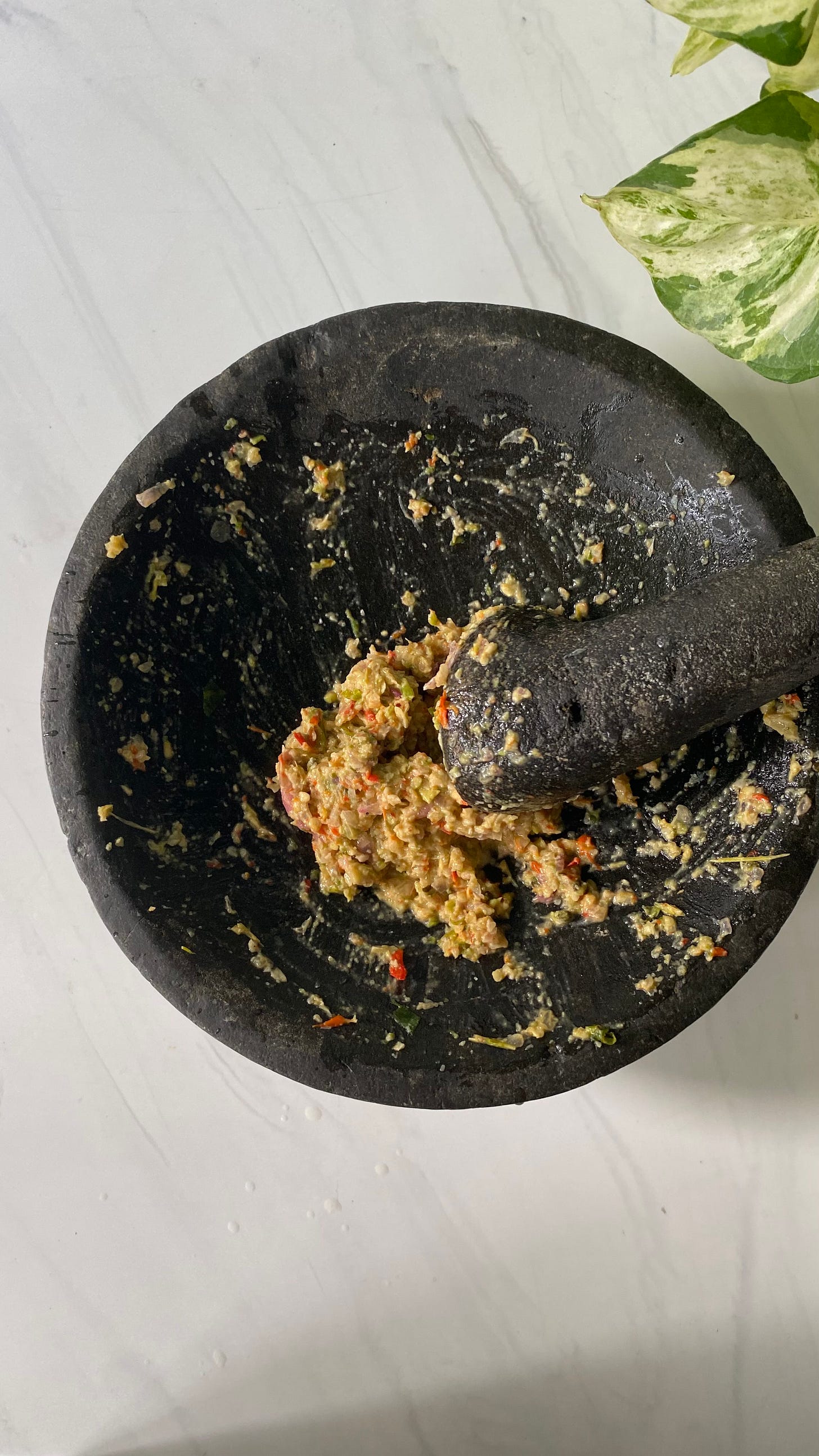I ended 2023 in the best way possible. After more than two years, I finally went home to Indonesia to see my family and friends. I spent a good five weeks at home, spending quality time with my family, indulging myself with lots of Indonesian food, and soaking up all the sun while I escape the dark and cold Dutch winter. Home was comforting to say the least. During this trip, I went to North Sumatra with my sister. As it was our first time in Sumatra, our mission was to find free roaming orangutans, sleep in the jungle, and see the largest volcanic lake in the world. We ticked all that but little did I expect, I might have found my favorite spice and sambal (to date).
Andaliman pepper — its history and origins
When we landed in Medan, the capital of North Sumatra, my sister and I visited a restaurant that served specialty Batak food. ‘Batak’ is a collective term used to identify a number of related Austronesian ethnic groups predominantly found in North Sumatra. The term is used to include the Karo, Pakpak, Simalungun, Toba, Angkola, and Mandailing, loosely related ethnic groups with distinct languages and traditional customs. Due to its close proximity to Lake Toba (~88km), Medan is one of the regions with significant populations of Batak Toba people. Hence, you can find many Batak Toba cuisine in Medan, such as mie gomak, a thick spicy noodle soup dish served in coconut milk-based broth, and arsik, a spicy fish dish, among many others. What makes Batak dishes taste so distinct than Indonesian food from other regions are the use of asam cikala (torch ginger fruit that gives acidity), and andaliman pepper.

The Sumatra island is home to over 60 volcanoes, making it the most volcanic island in the world. It’s also known for its dense rainforests and rich biodiversity. The area around Lake Toba itself is a paradise for farmers with fertile volcanic soil that supports the cultivation for various crops, including the andaliman pepper. Andaliman (Zanthoxylum acanthopodium), is a kind of flowering plant that belongs to the Rutaceae family, which makes it related to the Sichuan pepper which explains its slightly numbing flavor profile. In Indonesia, andaliman can only be found in the North Sumatra highlands and is indigenous to North Sumatra, more specifically the Toba Samosir District, North Tapanuli, and the Dairi region. The harvesting process typically involves locals carefully picking the pepper berries from the Andaliman plant by hand to ensure the delicate berries are not damaged during the process.
Other than the distinct flavour, what stands out to me is why andaliman pepper remains more regionally known and did not gain significant popularity as much as as other spices in Indonesia, such as nutmeg native to the Banda Islands during the spice trade era. Several reasons could be that andaliman pepper is native to the Lake Toba region, making its distribution more localized with challenging accessibility for traders. It was only in 1890 that many people were “discovered” by the external world. An Italian researcher and adventurer, Dr. Elio Modigliani, was the first to engage with the Batak Toba culture and navigate through the Batak Toba lands, then considered hostile and inaccessible to Europeans. This was after more than 300 years of VOC colonization in the Indonesian territories. Unfortunately, the VOC, influenced by missionary spies, eventually asserted control over the Batak, leading to the death of the renowned warrior leader Si Singamaraja XII and his family in 1904, along with the killing of many innocent people, including nearly 2,000 women and children. Despite this, the Batak people persisted in their resistance and actively participated in the Indonesian independence struggle from that period until 1954. The perceived isolation of the Batak people and their alleged practice of cannibalism might have contributed to the reluctance of colonial officers to explore Batak territory, fearing encounters with cannibalistic Batak tribes. Besides the influence of the Batak culture, the taste of andaliman is also quite distinct and may not be as versatile for various culinary applications as nutmeg, which is suitable for both savory and dessert dishes.
Andaliman sambal
It’s not a complete Indonesian meal without the presence of sambal. When we were in Lake Toba, all dishes were served with sambal andaliman on the side. Some places served thick and dense sambal, others go for the runny kind (probably with more lime juice). What they all have in common is that the sambal tasted so divine. Spicy, yet refreshing with those citrusy and minty notes. It was the perfect pair for all the freshly grilled seafood we dug into!

We cannot go home empty handed. Our local guide asked if we would like to get some souvenirs from Lake Toba and I told him that I would like to bring some andaliman pepper. He brought me to the local market and we grabbed a handful of andaliman pepper for me to recook the sambal at home for the whole family. So without further ado, here is the recipe.
Sambal andaliman recipe
Ingredients:
1 tsp vegetable oil
12 pcs of green bird’s eye chili or rawit pepper
5 pcs of red bird’s eye chili or rawit pepper
3 cloves garlic
5 Asian shallots or 2 banana shallots
2 candlenut
1 tsp andaliman pepper
Salt and sugar to taste
1 lime
How to make it:
Fry all ingredients except the andaliman pepper over medium heat.
Crush everything, including the andaliman pepper, using a mortar and pestle or a blender. If using a blender, make sure that you leave some textures rather than achieving a completely smooth consistency (see picture above).
Add a pinch of salt and sugar adjusting to taste, and finish it off with the lime juice.
-AP.







Such a lovely read that flowed so nicely from start to finish ❤️